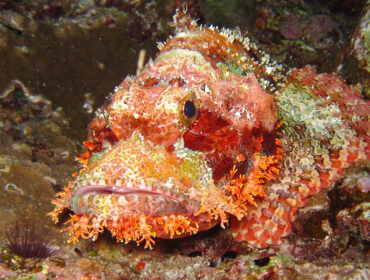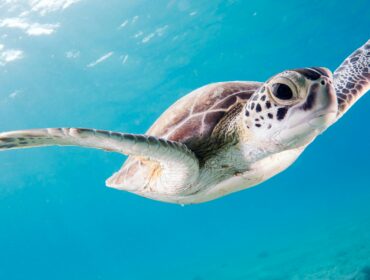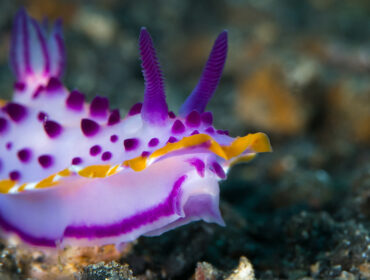Spring is finally here, and for divers, snorkelers, and beachgoers, that means warmer waters, clearer visibility, and prime conditions for exploring the underwater world. But alongside these perfect conditions comes another seasonal shift – jellyfish season.
Jellyfish blooms increase in coastal U.S. waters from March through early summer, with different species appearing in the Gulf of Mexico, Florida Keys, East Coast, and Hilton Head. Some are harmless, floating gently in the currents. Others deliver a sting that can be anything from mildly irritating to downright painful. Whether you’re diving wrecks off the Florida Panhandle, snorkeling in the Keys, or surfing in the Carolinas, it’s important to understand where and when jellyfish appear and how to avoid a painful encounter.
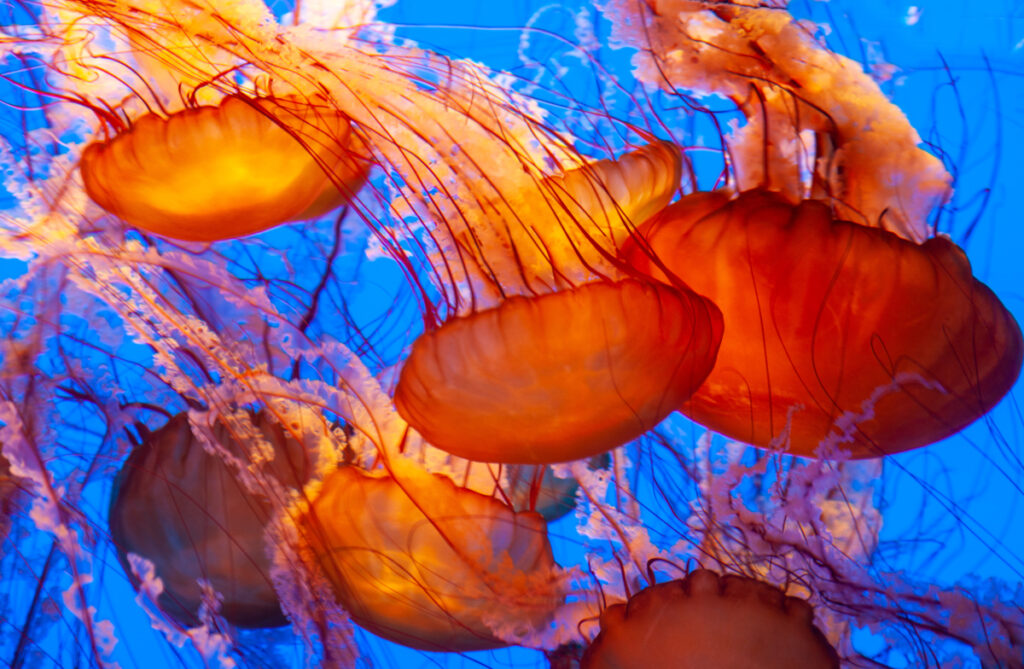
The Role of Jellyfish in the Ocean Ecosystem
Jellyfish may be an inconvenience to divers, but they play a crucial role in the marine food chain. As both predators and prey, they help regulate fish populations by feeding on plankton, fish larvae, and small crustaceans, while also serving as a food source for sea turtles, sunfish, and larger marine predators. Their presence, although sometimes frustrating, is essential for maintaining the balance of ocean life.
In recent years, jellyfish blooms have increased due to climate change, overfishing, and rising ocean temperatures. With fewer natural predators, their populations have surged in some areas, affecting local ecosystems. Despite their sting, jellyfish are fascinating creatures that have survived for over 500 million years. While divers may prefer to avoid them, understanding their role in the ocean helps us appreciate their unique place in marine biodiversity.
Let’s look at some of the spots where you can spot jellyfish.
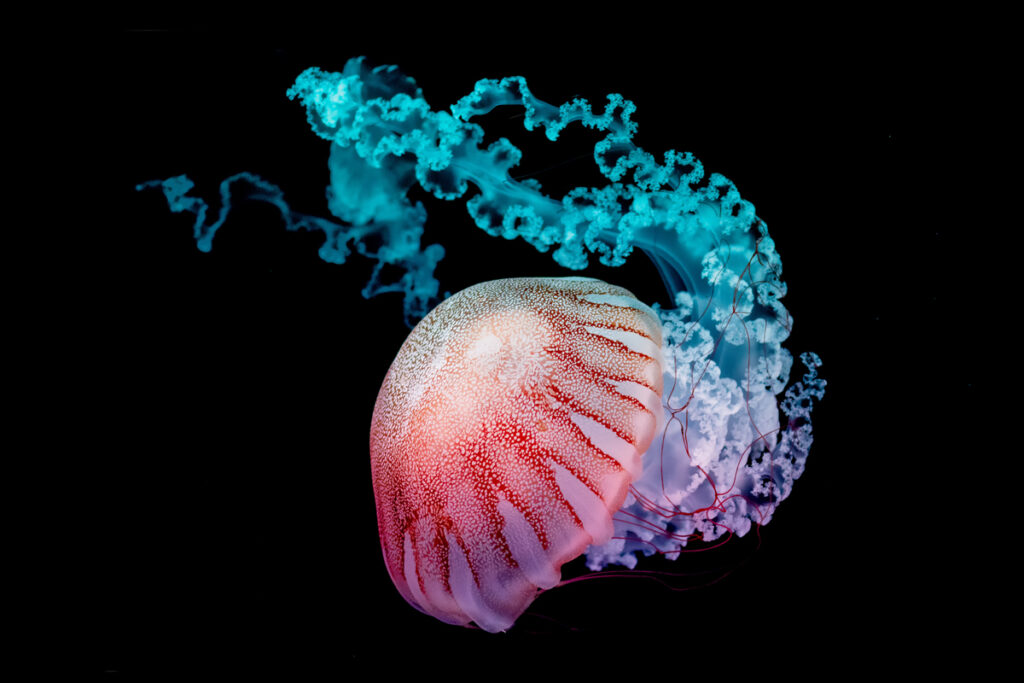
1. Jellyfish in the Gulf of Mexico – What to Expect
The Gulf of Mexico is home to a variety of jellyfish species, many of which become more active in spring as water temperatures rise. Moon jellies are the most common and are mostly harmless, though they can cause minor irritation if brushed against. Atlantic sea nettles are another frequent visitor – these semi-transparent jellies have long tentacles that pack a sting, though it’s usually not dangerous. Occasionally, divers may also spot the Portuguese Man o’ War, which isn’t technically a jellyfish but a colony of organisms working together—its sting, however, can be severe.
Jellyfish in the Gulf tend to concentrate in certain areas based on tides and currents. After heavy rainfalls, jellyfish numbers often increase because freshwater runoff affects salinity levels, driving jellies closer to shore. Some of the most jellyfish-heavy locations in spring include the Texas coast, Louisiana, and the Florida Panhandle. If you’re diving or snorkeling in these areas, wearing a dive skin or wetsuit can add an extra layer of protection.
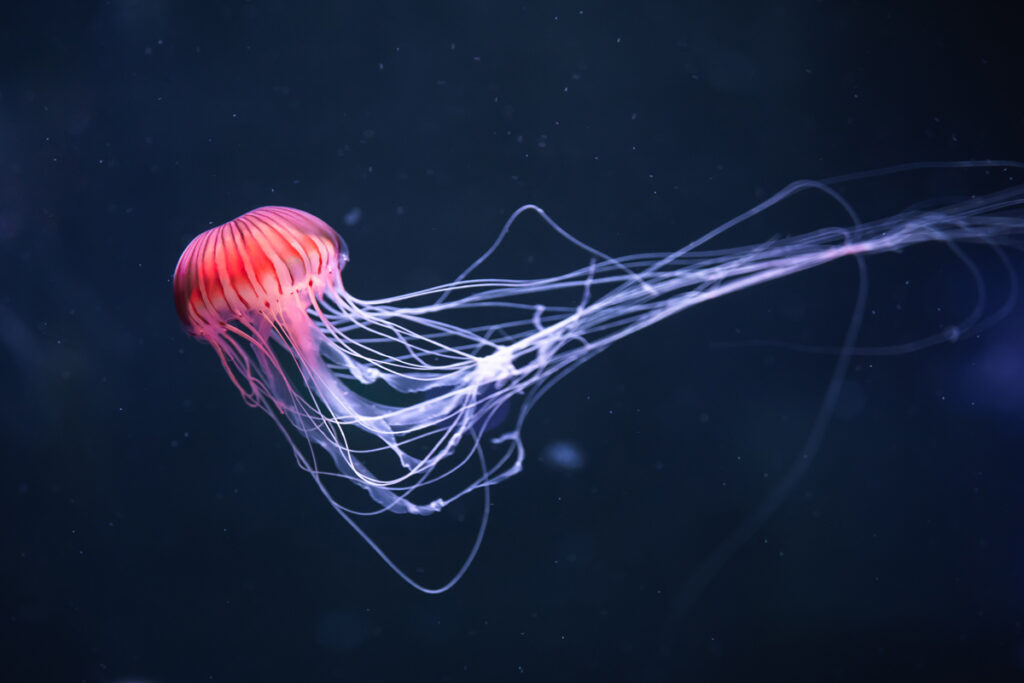
2. Florida Keys Jellyfish – Seasonal Guide & Safety Tips
The Florida Keys are known for their stunning reefs and marine life, but they also experience a noticeable increase in jellyfish populations between April and June. The most commonly encountered jellyfish here include moon jellies, sea nettles, and Cassiopea (upside-down jellyfish). While moon jellies have a mild sting and upside-down jellies rarely sting at all, sea nettles can leave a burning sensation that lingers for hours.
Jellyfish activity in the Keys varies by location and season. Shallow reef areas, mangrove forests, and seagrass beds tend to have the highest jellyfish presence. During strong tides or windy days, jellyfish are often swept closer to shore, making them more likely to be encountered by divers and snorkelers. Always check local dive shop reports for jellyfish conditions before heading out. If you do get stung, avoid rinsing with fresh water—it can make the sting worse. Instead, use vinegar or saltwater and carefully remove any tentacle remnants with tweezers.
3. Hilton Head Jellyfish Season – When & Where to Watch Out
Hilton Head, South Carolina, is a popular spot for snorkeling, paddleboarding, and shallow reef diving, but as temperatures rise in spring, the jellyfish season begins. One of the most common species found in Hilton Head’s waters is the cannonball jellyfish. These jellies, while large, are mostly harmless and often look like floating brown or blue cannonballs. However, sea nettles and moon jellies also make an appearance, and their stings can range from mild to moderate.
Jellyfish in Hilton Head are most active between May and September, but sightings begin as early as April. The strong tidal changes along South Carolina’s coast tend to bring jellyfish in and out, meaning their presence can vary from day to day. Many resorts and public beaches post jellyfish warnings when sightings are high, so it’s a good idea to check before swimming. If you’re diving or snorkeling offshore, wearing a dive suit or rash guard can help reduce the risk of accidental stings.
4. Jellyfish on the East Coast – Where & When They Appear
The East Coast of the U.S. sees a steady increase in jellyfish populations during the spring and early summer months. While Florida and the Carolinas see the first blooms, jellyfish gradually migrate northward as the waters warm. Moon jellies, sea nettles, and lion’s mane jellyfish are the most common along the East Coast, with sea nettles dominating areas like Virginia, Maryland, and North Carolina.
Because jellyfish tend to follow warm currents, their locations can shift depending on the weather. Some of the most jellyfish-heavy areas along the East Coast include Virginia Beach, Myrtle Beach, and Cape Cod. If you’re diving in these areas, visibility is key – jellyfish are easier to avoid when the water is clear. In murky or low-light conditions, be extra cautious, as jellyfish tentacles can be hard to spot until it’s too late.
5. Jellyfish Season in Florida – A Beachgoer’s Guide
Florida is home to some of the most diverse jellyfish populations in the U.S., and spring marks the start of jellyfish season in Florida’s waters. Depending on the region, jellyfish blooms can peak between April and July, with different species dominating different areas.
On the Panhandle and Gulf Coast, moon jellies and sea nettles are the most common, though man o’ war sightings can occur after storms. The Atlantic side, including Daytona Beach and Miami, experiences more sporadic jellyfish activity. While not all jellyfish in Florida are dangerous, getting stung is never fun. Before diving, check local advisories or lifeguard warnings to see if jellyfish have been spotted.
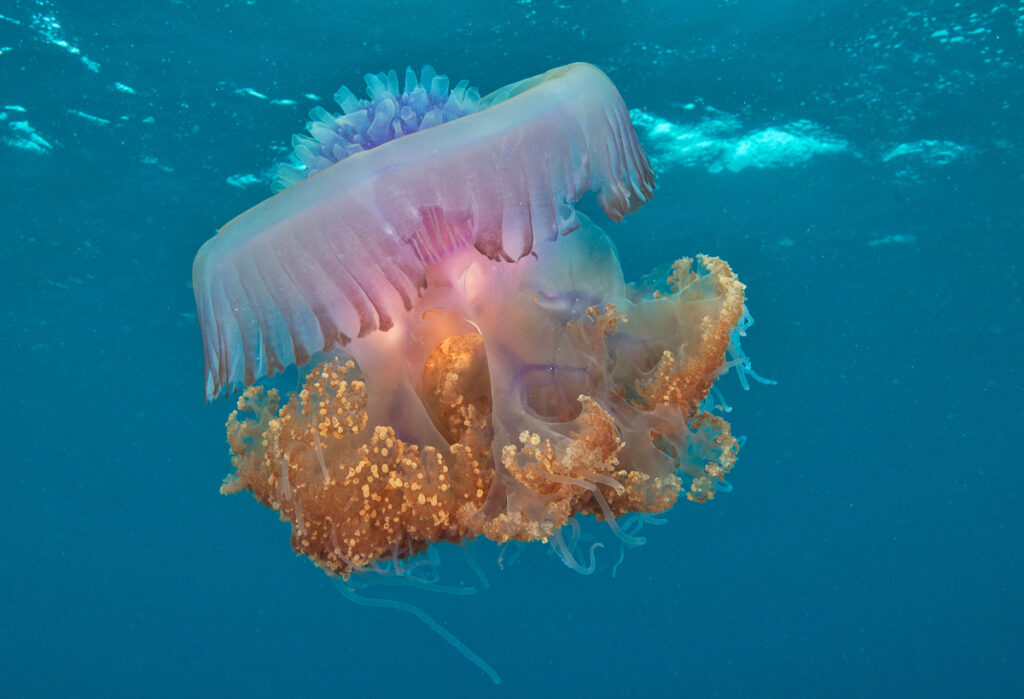
How to Avoid Jellyfish Stings While Diving
Spring may bring more jellyfish into coastal waters, but a few simple precautions can help you avoid unwanted encounters.
- Check Jellyfish Forecasts: Many beaches post jellyfish warnings online or on lifeguard stations. Always check local updates before planning your dive. You can also check the Jellywatch website for it.
- Wear Protective Dive Gear: A dive skin adds an extra layer of defense. The NeoSport by Henderson Spandex Skin Suit is a great option for lightweight, full-body protection against jellyfish, sea lice, and other irritants. Its form-fitting design reduces drag, making it comfortable for extended dives.
- Use a Thicker Wetsuit for Extra Protection: If you’re diving in cooler waters, the NeoSport 3mm Waterman Unisex 2-Piece Wetsuit Package provides both warmth and sting protection. Made from premium neoprene with flatlock-sewn seams and a heavy-duty YKK zipper, it offers durability and flexibility for all-day wear.
- Stick to Clear Water: Jellyfish are easier to avoid when you can see them. Murky or low-visibility waters increase the risk of accidental stings.
- Avoid Areas With High Jellyfish Activity: If you see large numbers of jellyfish drifting nearby, it’s best to move to a different dive site. Some jellyfish tentacles can extend far beyond what’s visible, so keep a safe distance.
- Apply a Protective Lotion Before Diving: Safe Sea Jellyfish & Sea Lice Lotion is scientifically proven to help prevent stings. Dermatologist-tested and available in five formulas, including options for sensitive skin, it acts as a shield against jellyfish venom.
- Do not Rinse Stings with Freshwater: Freshwater can trigger venom release from tentacle cells, making the sting worse. Stick to vinegar or saltwater for first aid.
- Remove Tentacles Carefully: Use tweezers to remove jellyfish tentacles. Never rub the sting site, as this can spread venom further into the skin.
- Have Sting Relief Ready: Wipe-Away Pain for Jellyfish Sting offers immediate relief by neutralizing venom, reducing redness, and preventing allergic reactions. Keeping a bottle in your dive bag ensures you’re prepared for any unexpected stings.
By staying informed and taking precautions, you can enjoy your dive without worrying about jellyfish stings.
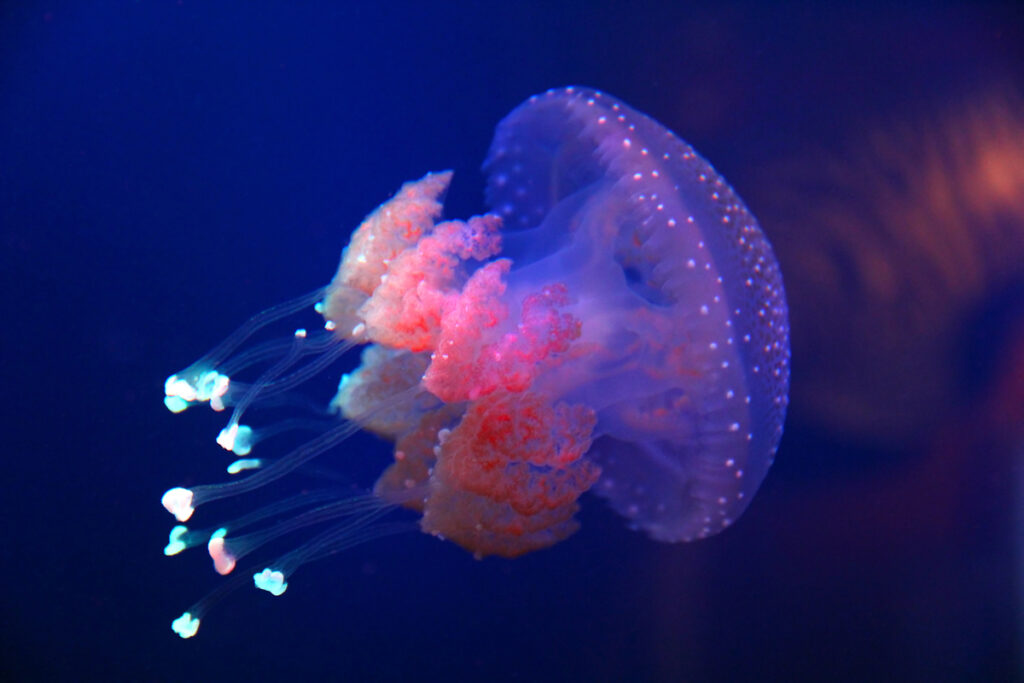
Final Thoughts
With proper awareness and preparation, you can still enjoy incredible underwater experiences while avoiding unwanted stings. Whether you’re exploring the reefs of the Florida Keys, diving off the Gulf Coast, or venturing along the East Coast, knowing what to expect can make all the difference.
Before heading out, check local jellyfish forecasts, wear protective dive gear, and carry sting relief essentials. A little preparation goes a long way in keeping your dives safe, comfortable, and unforgettable.The ocean is full of beauty – respect it, stay informed, and dive in with confidence this spring!
FAQs
When does the jellyfish season start in the U.S.?
Spring marks the beginning of jellyfish season, with blooms appearing in Florida, the Gulf, and the East Coast by March or April.
What is the worst month for jellyfish in Florida?
May through July is peak jellyfish season in Florida, though it varies by location.
Do jellyfish stings hurt?
Some feel like a mild burn, while others (like man o’ war stings) can be extremely painful and even dangerous.
How do I know if there are jellyfish at my beach?
Many beaches post jellyfish warnings. You can also check local weather and marine reports.
Can I still dive safely during jellyfish season?
Absolutely! Just take precautions, wear protective gear, and stay alert while in the water.



